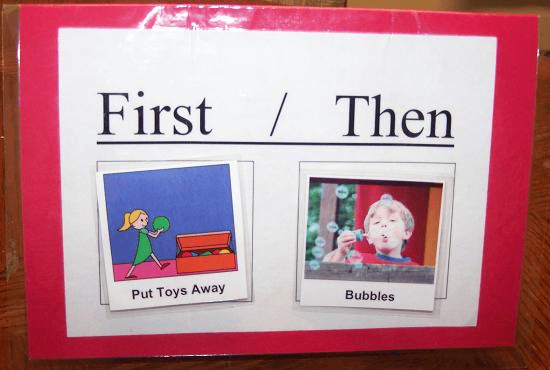6 Tips to Teach a Child Self-Discipline

|
Getting your Trinity Audio player ready...
|
If you can effectively teach a child self-discipline, they will thank you later. They may not do it verbally, but you will see them succeed in the future and know that you are partially responsible for their success.
It is important to start instilling self-discipline early in a child’s life. Self-discipline shows itself in nearly every aspect of one’s life. It determines whether you keep your commitments; be it doing your assignments or regularly exercising. It is a predictor of success. In fact, it has been found that self-discipline is a better predictor of academic success when compared to IQ.
The importance of self-discipline cannot be overstated. If you are wondering how you can help your child to develop their self-discipline muscle, here are some tips for you.
Six Tips to Teach a Child Self-Disipline
1. Create Routines and Structure
If there are behaviors you want to instill in your child, you can try building them into a structure that they follow. Studies have shown how routines can help instill self-control.
Once the routine becomes ingrained into them, so does the habit. If you want to teach a child the importance of hygiene, you can add it to their ritual so that it is something they do automatically.
For example, if the first thing they do every morning is showering and brushing their teeth, once they get used to that routine, it may be very difficult to break these good habits.

3 Ways to Use Timers to Encourage Homework and Chore Completion
2. Condition Good Behavior
There are two ways of conditioning. There is classical conditioning and operant conditioning. Classical conditioning refers to teaching organisms to associate stimuli with certain events leading to anticipation.
Two examples of conditioning are how, in many schools, teachers have conditioned their students to understand that they can get their attention by raising their hands and that bells indicate the start or end of sessions. Ivan Pavlov was the pioneer in understanding and explaining classical conditioning by experimenting with dogs.
Classical conditioning is different from operant conditioning because, with operant conditioning, you can encourage behavior using reinforcement (e.g., first clean up your supplies, then watch tv).
This approach can also be referred to as the Premack Principal (doing a less preferred activity before a more highly-preferred activity).

Most arguments on operant conditioning arguments are centered on the fact that rewards do not encourage intrinsic motivation. However, sometimes extrinsic motivation is beneficial to have in place while internal motivation is being developed.
You can also make the stakes higher as your child ages and can handle more. For instance, when your child is little you may say “clean up those crayons and then you can take out another toy.” However, when they are older you might state, “complete your homework assignment and then you can go out with your friends.”
The goal is to help your child to develop intrinsic motivation, while learning to space out their day into moments of work and play. Helping them understand the value and importance of those “less-preferred” tasks will help them build intrinsic motivation over time.
Mini Visual Schedules for Busy Families
3. Use Games
Few people would question the fact that play is essential in learning. Games are a great way to teach children important lessons all while they are having fun. There are many games that you can use to teach children self-discipline, from Simon Says to keeping a balloon up in the air.
Self-regulation is a critical aspect of self-control. Therefore, to make the games more challenging, you can change the rules sometimes so that kids can learn to listen and adapt to changes. Life is always changing, and it is essential to teach your kids to roll with any changes that occur.
Games to Practice Self-Discipline
4. Explain Rather than Tell
There is a field of psychology known as cognitivism. Cognitivism refers to focusing on the mental processes that lead to learning. If you chose to apply cognitivism when teaching your children self-discipline, you will explain why they should do something rather than tell them to do it ‘because you said so.’
For example, if your child relies on you to ask them to clean their room, what happens when you are not around to direct that behavior? On the other hand, if they understand why cleaning their room is essential, there are high chances that they will clean their room next time whether you ask them to or not.
Of course, you may initially have to remind them a few times. However, with cognitivism, your goal is to teach your kids to think for themselves rather than following instructions mechanically.
5. Use Empathy
Empathy is an important value, and some suggest that it has been necessary for the survival of the human species. You may be wondering how empathy and self-discipline connect.
Let’s say your child has been drawing on your walls at home. One way you would respond to drawings on your walls is to tell your child not to draw on your walls and end that discussion there. Alternatively, you could choose to respond empathetically.
You could tell your child that drawing is not wrong but that they should not draw on the walls. You further tell them that because they want to draw, you will buy them drawing books in which they can do so.
This shows them that you understand what they want, but you are setting boundaries to acceptable behavior. Similarly, you could tell a very hyperactive child that they are allowed to run on the lawn but not on the road.
There are many psychological theories that talk about how you can apply them when teaching your children any skills, including self-discipline. When teaching self-discipline, your goal should be to teach your children to be self-disciplined even in your absence.
6. Utilize Online Resources
There are so many resources online to help students stay self-disciplined these days. For instance, there are apps to help keep track of focus and exercise, there are calendars, trackers, and timers to help with time management.
There are even free tips and materials which can support students, such as those with ADHD or learning disabilities, in academic areas.
For instance, if a student needs visuals and guidance to write an essay, they can find support in an online article such as 5 Paragraph Essay Outline.
If students benefit from some low-level noise to help with focus when studying, they can find some studying sounds or white noise on Youtube.
How to Use Graphic Organizers to Improve Academic Skills
If you found these six tips to teach a child self-discipline helpful, please share this post!
Education and Behavior – A Research-Based Library Keeping Parents, Caregivers, Educators, Counselors, and Therapists on the Same Page!






